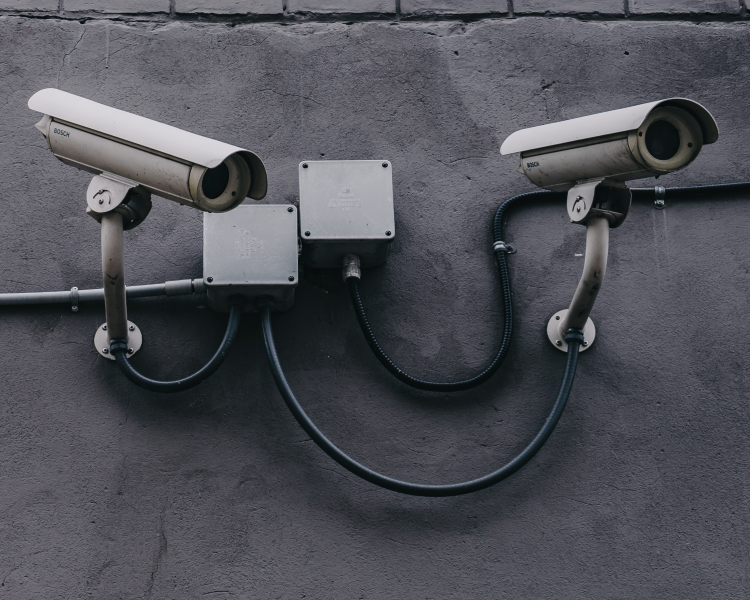Just Imagine this, you've had a long day at work, and as you approach your front door, it magically unlocks itself, recognizing your presence through your smartphone. The lights in the hallway flicker on automatically, and your favorite soothing playlist starts playing softly in the background. You breathe a sigh of relief as you step into your smart home, appreciating the convenience and comfort it provides.
But hold on a moment! While this futuristic scene sounds like a dream come true, it also opens the door to potential security and privacy risks. With the rapid proliferation of smart home devices, from intelligent speakers and connected thermostats to smart cameras and automated appliances, the need to safeguard our digital domains has never been more critical.
- What Kind of Technology Smart Home Brands Use to Keep Data Secure
- Tips to Secure Your Smart Home and IoT Devices
- Examples of Most Secure Smart Home System
What Kind of Technology Smart Home Brands Use to Keep Data Secure
Smart home brands employ a variety of advanced technologies and security measures to keep data secure and protect users' privacy. Some of the key technologies and practices include:
1. Local Data Storage
Some smart home devices like the EVVR Center Lite offer the option of local data storage, allowing users to store data directly on the device or on a local server within their home. This is usually seen in smart home without internet. This approach can provide an extra layer of security as it reduces the reliance on cloud storage, potentially lowering the risk of data breaches.
2. End-to-End Encryption
Smart home brands may employ end-to-end encryption for data exchanged within the local network. This means that data sent between devices within the home remains encrypted throughout its journey, from the sender to the receiver, ensuring that unauthorized parties cannot intercept and access sensitive information.
3. Secure Authentication
To prevent unauthorized access and provide secure home automation, some smart home systems implement strong authentication methods, such as multi-factor authentication (MFA). This ensures that only authorized users can control and interact with the devices.
4. Secure Protocols
Smart home devices use secure communication protocols like HTTPS, SSL/TLS, or WPA3 for Wi-Fi, ensuring that data transmitted between devices and servers remains encrypted and protected from interception.
5. Firmware Updates
Regular firmware updates are essential for fixing security vulnerabilities and improving the overall security of smart devices. Reputable brands often provide timely updates to address potential weaknesses.
6. Hardware Security
Advanced hardware security features, such as secure chips and Trusted Platform Modules (TPMs), are integrated into smart home devices to store sensitive data and perform cryptographic operations securely.
7. User Permissions and Controls
Smart home brands implement robust user permission systems, allowing users to control access rights and data-sharing preferences for different devices and applications.
8. Data Minimization
Respecting the principle of data minimization, reputable smart home brands only collect and store the essential data required for the device's proper functioning and user experience, reducing the risk of data exposure.
By employing these technologies and best practices, smart home brands aim to create a safer and more secure ecosystem for their users, building trust and confidence in the adoption of smart home technologies.
Tips to Secure Your Smart Home and IoT Devices
Securing your smart home and IoT devices is essential to protect your privacy, data, and overall digital security. As technology continues to advance, so do the threats and vulnerabilities. Here are some tips to help you secure your smart home and IoT devices:
- Change default passwords: Ensure IoT device security by replacing default credentials with unique, strong passwords for each device to thwart potential hackers.
- Regularly update firmware: Keep your devices' firmware up to date. Manufacturers often release updates to fix security vulnerabilities, so regularly check for updates and install them promptly.
- Secure your Wi-Fi network: Use WPA2 or WPA3 encryption on your Wi-Fi router and choose a strong and unique password for your network. Also, consider using a separate guest network for your IoT devices.
- Use a firewall: Consider setting up a firewall to monitor and control the traffic between your devices and the internet. Some routers have built-in firewall features.
- Segment your network: Separate your smart home devices from your main network by creating a dedicated IoT network. This way, if one device is compromised, it won't affect the security of your other devices.
- Disable unnecessary features: Turn off any features or services on your devices that you don't use. Each active service could be a potential attack vector.
- Regularly review permissions: Check the permissions granted to your smart home apps and devices. Only give them the necessary permissions they need to function.
- Monitor your devices: Keep an eye on your IoT devices for any unusual activity or unexpected behavior. Some advanced security systems can help you detect anomalies.
- Use reputable brands and devices: Stick to well-known and reputable brands when purchasing smart home and IoT devices. They often have better security measures and provide timely updates.
- Be cautious with voice assistants: Voice assistants can be convenient but also pose privacy risks. Consider disabling the "always listening" feature and review your voice assistant's data collection settings.
- Secure physical access: Ensure physical security for your devices by placing them in a safe location and locking them if possible, especially for devices like smart locks and security cameras.
- Educate your family members: Teach everyone in your household about smart home security best practices and the potential risks associated with IoT devices.
- Review privacy policies: Read and understand the privacy policies of your smart home devices and apps to know what data is being collected and how it will be used.
- Use a VPN (Virtual Private Network): Consider using a VPN on your devices to encrypt your internet traffic and protect your data from potential eavesdroppers.
By following these tips, you can significantly improve your smart home's and IoT devices' security and reduce the risk of falling victim to cyberattacks or privacy breaches.
Examples of Most Secure Smart Home System
Now it’s our turn to present you with some quality examples of reliable secure smart home devices. Let’s jump right in:
Amazon Echo (4th Gen)
Amazon Echo has sophisticated privacy and security technology. All of its receivers, i.e., mic and camera, come with special buttons that allow you to physically switch them off. So, even if anyone is trying to hack into the system, there’s no way he/she would be able to eavesdrop. You can also customize your privacy settings to your needs, review and delete existing recordings, and check and adjust which apps or individuals are being granted permission. All the features we discussed make Alexa a top-security device despite the fact that it has to stay connected to the internet all the time.

Security features
- Physical switches for mic and camera.
- Customizable privacy settings.
- Review and delete existing recordings.
- Manage app permissions.
EVVR Center Lite
If you’re having trouble with your smart home hub being connected to the internet, we’d suggest you go for EVVR Center Lite. The truly local network keeps the communication within the parameters of your home. With local data storage, you don’t have any risks of your data being stolen from company clouds. And with an enterprise-class data encryption on board, there’s no one beating EVVR at this point!
Security Features
- Truly local network communication for privacy at home.
- Local data storage for enhanced security.
- Enterprise-class data encryption for maximum protection against data breaches.
Apple Homekit
Finally, we have the Apple Homekit. Apple has long been known for offering a reliable service in terms of privacy and security, and Apple’s Homekit is no different. You’d have to rely on iCloud for data uploading and other works; however, it is equipped with encryption so that data can’t be stolen while it’s being uploaded. It also uses a strong authentication process while syncing between different devices. Overall, it offers a solid security foundation any average individual can rely upon.

Security Features
- Encryption for data uploading to iCloud.
- Strong authentication process for device syncing.
- Solid security foundation for users.
Final Thoughts
So, what do you think? We’ve discussed the different aspects of security and privacy in smart homes. We’ve also brought to light some quality smart home options that offer sophisticated privacy features.
If you’re not sure which device you want to go for, just reach out to us. Let us know your concerns. Our representatives will immediately address your issues and provide you with an instant solution












